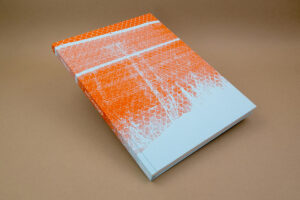YOUR CART
- No products in the cart.
Subtotal:
€ 0

Concept and photography:
Sem Langendijk
Text:
Sem Langendijk
Taco Hidde Bakker
Text assistant:
Noa Ben-David
Proofreading:
Hannah Vernier
Design:
Rob van Hoesel
Lithography:
Sebastiaan Hanekroot (Colour&Books)
Production:
Jos Morree (Fine Books)
Print and binding:
Wilco Art Books (NL)
Supported by:
Mondriaan Fonds
Amsterdams Fonds voor de Kunst
Aedes
To whom does the city belong?
Haven tells the coming of age story of a boy in a rapidly changing environment, based on memories of surroundings that no longer exist. Sem Langendijk (NL) witnessed the unrooting effects of gentrification during his upbringing in the periphery of a large city. After the neighbourhood transformed into a waterfront, Langendijk realised he no longer identified with this area. He lost his connection to the place he lived in for nearly thirty years.
This body of work is the result of a long-term research project into shifting demographics, waterfront development and the dynamics of gentrification. Due to social inequality and urbanisation, people are continuously driven to relocate, particularly within post-industrial cities.
Haven brings together the environments of different port cities in a documentary fiction, highlighting the transformation of disused docklands and the communities that reside there. A second chapter contains the background research, providing context for the personal testimony that makes up the first part.
Sem Langendijk is a Dutch contemporary photographer with an interest in communities and their habitats. His research involves examining the identity of a place and the relation people have with their environment. Choosing to shoot on large and medium format cameras lends a certain tranquility and poeticism to his work, in which he blends visual storytelling with personal documentation. He holds a BA in Photography from the Royal Academy of Arts in The Hague, and works for editorial clients such as WSJ Magazine, Bloomberg Business and The Economist. He is a recipient of the Mondriaan Stipend for Emerging Artists.
“None of the photographs are captioned or dated, including the typologies at the book’s conclusion (fast-food shops, shipyards), which form a visual conversation with the writer Taco Hidde Bakker’s essay on gentrification, an account of what we might lose when the ‘intense mingling’ once characteristic of urban life disappears in the quest for a bright, shiny future.” (Brendan Embser)
“In that word ‘haven’, you have to read a double meaning. The Dutch port and the English harbour. Langendijk photographed his series in (former) harbour areas. But the emotion behind the images has to do with the place where he was born and grew up: on Westerdokseiland, after that place had lost its harbour function and before property developers smelt the unmistakable smell of money there. In those years, it was a place for artists and other free spirits. So the title harbour is at least as much about the nostalgic longing for a safe, sheltered place.” (Jan Postma)
De Groene Amsterdammer (in Dutch)
“They are romantic pictures, the images referring to a time that no longer exists. But the recently published photo book Haven is also a harsh indictment of gentrification and capitalism that prioritises expats, investors and tourists. The book stresses the importance of a diverse city, with room for everyone, including eccentrics and misfits.” (Leonie van Nierop)
“Together, the images depict an alternative approach to life. ‘There is an ongoing debate about whether people should have a say in what happens to their surroundings,’ says Langendijk. In the ADM they did, and its inhabitants worked to integrate their ideas into mainstream society. ‘But, most of the time people still need to make room for big developments,’ he continues. The series should encourage us to rethink our understanding of urban space — who owns it and how it should be used.” (BJP)